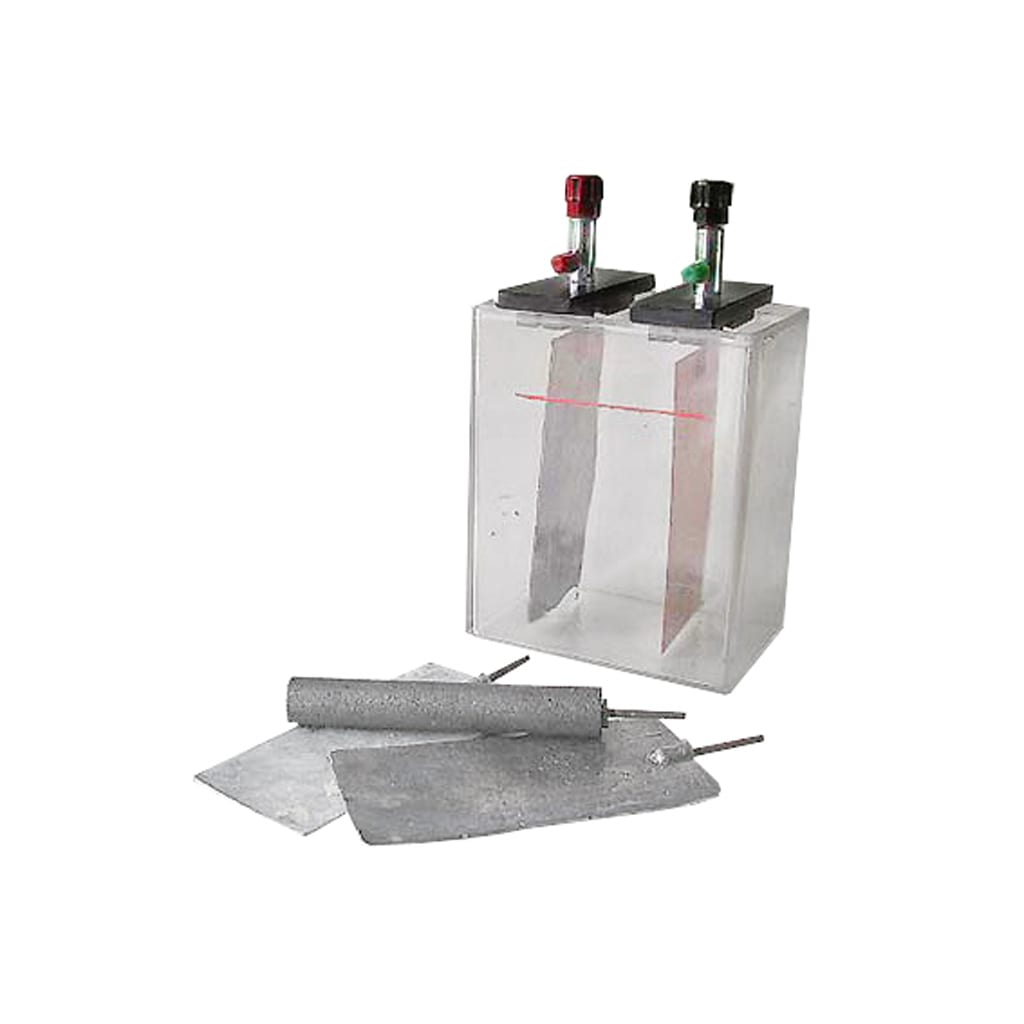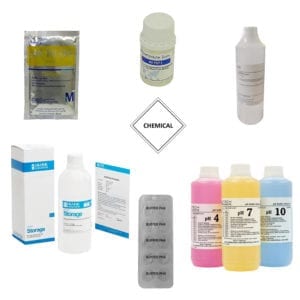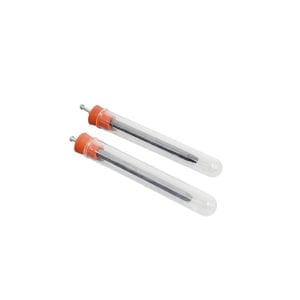ELECTROLYSIS SET: (C-Zn-Cu-Pb)
Demonstrates electrochemical effect. Comprises a transparent plastic container 120 x 105 x 75mm with terminals attached to plastic supports holding the electrodes. 4x electrodes supplied – carbon rod, zinc, copper, lead.




